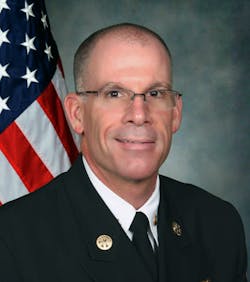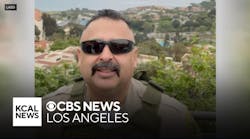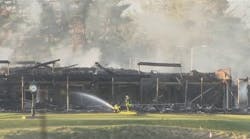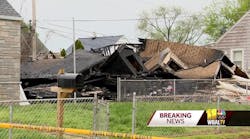It's 08:00 hrs at the academy and there are 25 recruits standing in formation, five abreast and five lines deep. Their shoes are perfectly shined, uniforms pressed, gig lines centered to perfection, watches set 15 minutes ahead to ensure they’re always on time and that they never miss an assignment. When an order is given, it’s carried out promptly, without question—double-time in most cases—and confirmed with respect: “Yes sir,” “Yes ma’am.”
These are the proven training practices and principles of many fire departments throughout the country. They represent the foundation of what we commonly refer to as a paramilitary organization, an organization in which the structure, training and subculture closely resemble that of a professional military organization.
As a firefighter and fire officer, I strongly support and have reaped the rewards, both personally and professionally, of a paramilitary structure. But I also believe the fire service can overindulge in military influence. Paramilitary culture can be an excellent way to teach discipline, chain of command and duty to serve. But should military practices and principles be used as a point of reference for our tactics and decision-making on the fireground? Are the fireground and the field of battle similar enough that we should align our tactical priorities and our go/no-go tactics?
I ask these questions based on a thought-provoking conversation sparked among a group of firefighters following a presentation that compared the fireground to the battleground. The presenter argued that some leaders in the fire service, when faced with a critical go/no-go situation, prioritize the life of the firefighter over that of the civilian whom we’ve taken an oath to protect.
Our conversation broke along now-familiar lines: Some felt that the advocacy of firefighter safety has led to a “risk averse” model for decision-making, which in turn leads to strategic and tactical operations that elevate the safety of the firefighter above that of the civilian or victim in need. In contrast, others argued that an adrenaline-driven group of “risk seekers” employ their chosen tactics and perform high-risk operations all under the auspices of a sworn duty-to-act or “the mission” as defined by the military.
As divisive as these two opinions might be, I firmly believe there’s a balance that can and should be sought between the two sides. Should our tactics and decision-making error on the side of our personal safety? Yes. Should we perform high-risk operations (in a calculated manner) when a civilian or firefighter’s life is on the line? Absolutely!
Our tactics and the doctrines that influence the decisions we make (e.g., NFPA standards, IAFC Rules of Engagement, the Everyone Goes Home motto and related training materials), without exception place life safety at the top of the list. At the same time, they also support and advocate the “risk a lot to save a lot” mantra, which clearly defines a savable life as the determining factor of when it’s acceptable to initiate these high-risk tactics. What’s a lot? Simply stated, it’s the life of a firefighter.
A life that can be spared by a firefighter performing a specific task or high-risk tactic that may cost the firefighter’s life is and always has been an acceptable and supported procedure. The qualifier is time. If you have discretionary time, use it, and immediately request the additional personnel and/or resources necessary to perform the task in the safest manner possible. If time is limited, use what’s immediately available and attempt the rescue. No more, no less.
To be clear, the duties we perform as firefighters have numerous similarities with our military counterparts. Both are high-stress environments involving life-and-death decision-making. Both demand a complement of highly trained, capable personnel with strict discipline and high levels of mental and tactical proficiency. But the consequences of our actions or inactions are much different.
On the field of battle, a soldier and his/her crew are trained to achieve the mission at all cost; lives are on the line 100 percent of the time, directly or indirectly. The stakes surrounding a defeat on the battleground are much greater. Not only will a defeat cost the lives of many, but it could also jeopardize the political control and well-being of an entire nation, state or province. Such high stakes justify the higher risk. But they also indicate where a comparison between the fireground and the battleground must end.
I believe no fire service leader today is content with allowing a civilian to die in order to protect their firefighters from risk. But rarely are the circumstances so black and white. The fireground presents variables that require lightning-fast decision-making. While saving a life remains our utmost priority when the opportunity to do so presents itself, company officers and incident commanders must also lead the way into battle with a keen focus on the welfare of their crew, coupled with the courage and conviction to do the right thing by them.






